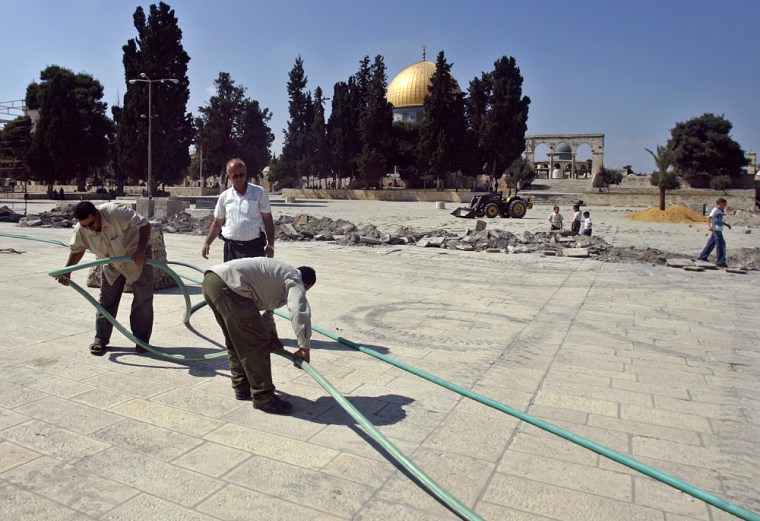Israeli archaeologists charged that digging overseen by Islamic religious leaders at a hotly disputed Jerusalem holy site damaged a wall that might date back to the Bible.
Islamic authorities responsible for Haram as-Sharif, known to Jews as Temple Mount, said digging a trench was necessary to replace 40-year-old electrical cables. They called the Israeli group’s charges on Thursday “sheer propaganda.”
The hilltop compound is a flashpoint in the Israeli-Palestinian conflict. Home to the silver-domed Al Aqsa Mosque and gold-capped Dome of the Rock, it is Islam’s third-holiest shrine. Jews revere it as the location of the two biblical Jewish temples, making it the holiest site in Judaism.
Disagreements over who should control the holy site have helped scuttle past Mideast peace talks.
On Thursday, Israeli archaeologist Zachi Zweig said a tractor used to dig the trench damaged the foundation of a 7-yard-wide (7-meter-wide) wall that might have been a remnant of the Second Temple.
Zweig said his group, the Public Committee Against the Destruction of Antiquities on the Temple Mount, drew that conclusion because of the location of the damaged foundation.
“We saw the damage for ourselves and documented it,” he said.
The Second Temple was built in 515 B.C. by Jews who were allowed to return from exile in Babylon by Cyrus the Great of Persia. It was destroyed by the Romans in A.D. 70.
The tractor dug a 4-foot-deep (1.2-meter-deep) trench, Zweig said.
“The bedrock at this location is very shallow, so there is a high probability that ancient remnants were damaged,” he added.
The top Muslim cleric in Jerusalem, Mufti Mohammed Hussein, rejected the Israeli group’s charges.
“We don’t harm the antiquities, we are the ones who are taking care of the antiquities, unlike others who destroy them,” he said.
Zweig said the Israel Antiquities Authority supervisor who was assigned to oversee the cable replacement was a novice archaeologist. “The oversight was a joke,” he said.
The authority had no comment.
Digging for the cable was completed on Wednesday, the Muslim Religious Council said.
Israel captured the hilltop compound from Jordan in the 1967 Mideast War. Israel has left its daily administration to Islamic authorities and barred Jews from praying there out of respect for Muslim sensitivities. But Palestinians insist on sovereignty there, rejecting any Israeli or Jewish link to the site.
Disputes over construction projects there have erupted in violence several times since Israel captured it from Jordan. Earlier this year, an Israeli archaeological dig just outside the disputed site led to widespread protests. Israel said it was planning to replace a shaky access ramp, but the Muslim authorities charged that the Israelis were damaging the site.
